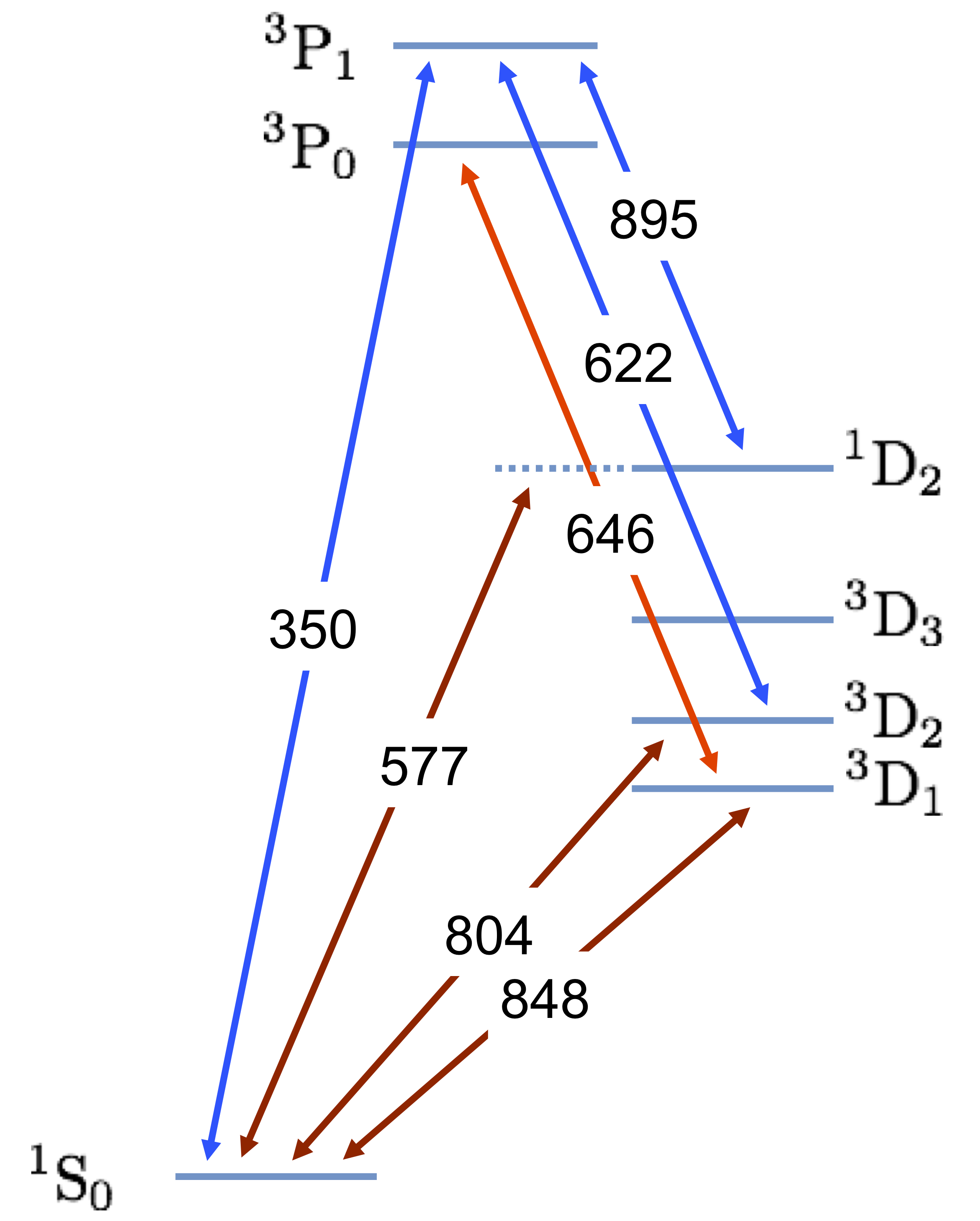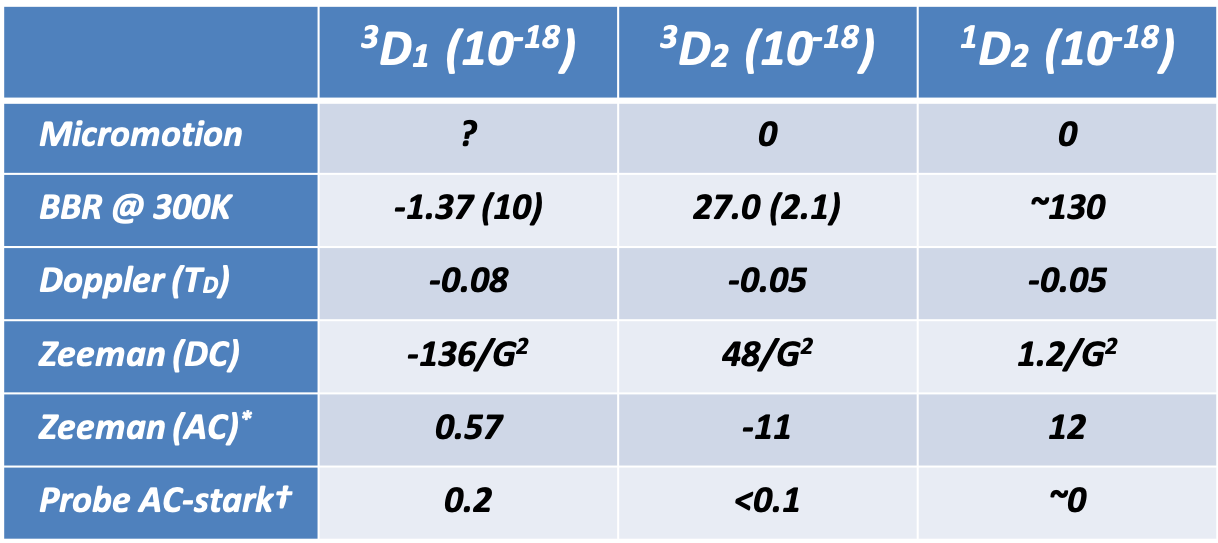Lutetium
Singly ionized lutetium is a unique atomic clock candidate
in that it supports three clock transitions:
1S0-to-3D1 :
a highly forbidden magnetic dipole (M1) transition at 848 nm
with a lifetime of approximately one week
1S0-to-3D2 :
a spin-forbidden electric quadrupole (E2) transition at 804
nm with a lifetime of approximately 18 seconds
1S0-to-1D2 :
an E2 transition at 577 nm with a lifetime of approximately
180 ms
The basic level structure of 176Lu+
is shown above with the clock transitions shown in brown.
As the v level is so long-lived, it is used effectively as
a ground state with detection and cooling carried out via
scattering on the
3D1-to-3P0
transition at 646 nm (red). To facilitate preparation into
the 3D1 level, optical pumping lasers
at 350, 622, and 895 (blue) are used during clock
operation. All the lasers needed are based on inexpensive
diode lasers.
Hyperfine Averaging
Each of the upper clock states has an electronic
angular momentum, J, which nominally results in a
significant sensitivity to electromagnetic fields. To
mitigate this problem our group introduced the concept of
hyperfine averaging in which the laser is stabilized to
the average frequency of transitions to all possible
hyperfine states of a fixed mF, specifically |F ,
mF=0> for all possible F. This averaging
technique takes full advantage of the insensitivity of
mF=0 states to magnetic fields, and eliminates
most of the frequency shifts from electromagnetic fields
by realizing an effective J=0 level. For each upper D
level, the result is a reference frequency with very low
sensitivity to electromagnetic fields.
Clock properties
Several effects limit the
performance of an optical clock and must be
considered. Lu
+ has several favourable atomic
properties, such that all of these shift can be made
extremely small. The table below gives an estimate of the
systematic shifts and associated uncertanties we expect are
achievable for each of the three clock transitions in
Lu
+.
Micromotion
Both
3D
2 and
1D
2 transitions have
Δα
0(0)<0 and so micromotion shifts can
be eliminated at the magic rf frequnecy, near 33 MHz and 15
MHz respectively. For the
3D
1
transition, micromotion shifts will depend on the level of
compensation. It is noted compensation at the level of
10
-20 has been demonstrated on the similarly
heavy Yb
+ ion.
Blackbody Radiation
The
3D
1 transition has the
lowest BBR
shift of all estabilished optical clocks. The
3D
2 transition has the lowest BBR
shift of clock candidates with the property
Δα
0(0)<0.
Second-Order Doppler
The
2.5 MHz linewidth of the cooling
transition facilitates both effective Doopler cooling
and state detection. At the Doppler temperature
(T
D), second order Doppler shifts are
<10
-19.
Zeeman (DC)
Hyperfine averaging eliminates most magnetic field
sensitivity. Residual quadradric dependence arises from
hyperfine mixing of the fine structure states.
Zeeman (AC)
An
oscillating
magnetic field at the trap RF frequnecy
and transverse to the DC magnetic field results in shifts that do
not cancel with hyperfine averaging. Values in the table
are given for an rms transverse field of 0.65 μT, as
measured
for our current ion trap using Ba+.
Probe AC-stark
Only significant for the
3D
1 transition
which has ~1 week lifetime.
Effective control of the probe ac-Stark shift at the
<10
-18 level has already been
demonstrated using hyper-Ramsey and auto-balancing
methods on the E3 transtion in
Yb
+, for which the Stark shifts are much
larger than Lu
+(
3D
1). The
value in the above table is evaluated for hyper-Ramsey
with a 10 ms π/2 pulse time, 100 ms free evolution time, and a
10% clock laser intensity instability.


